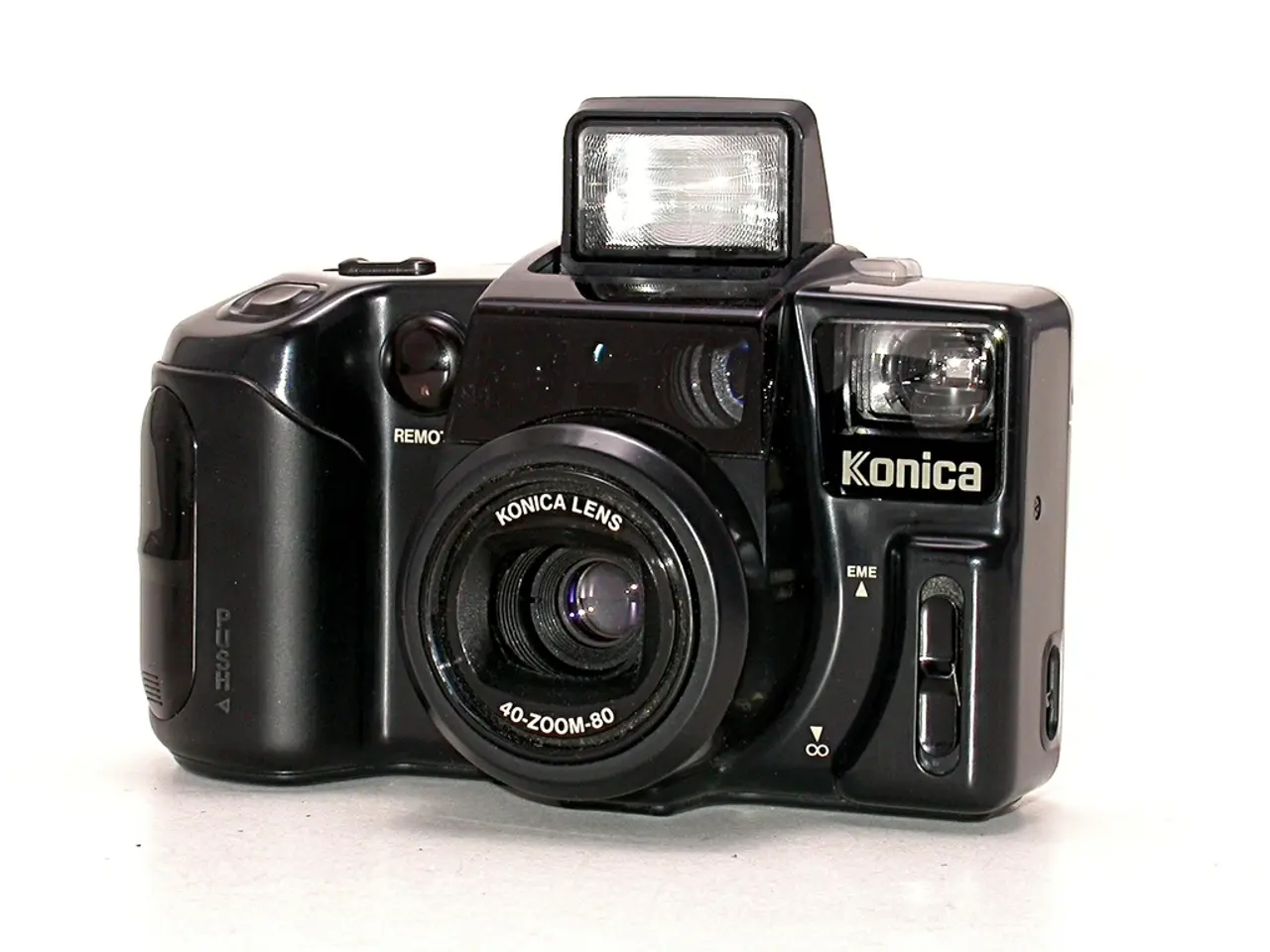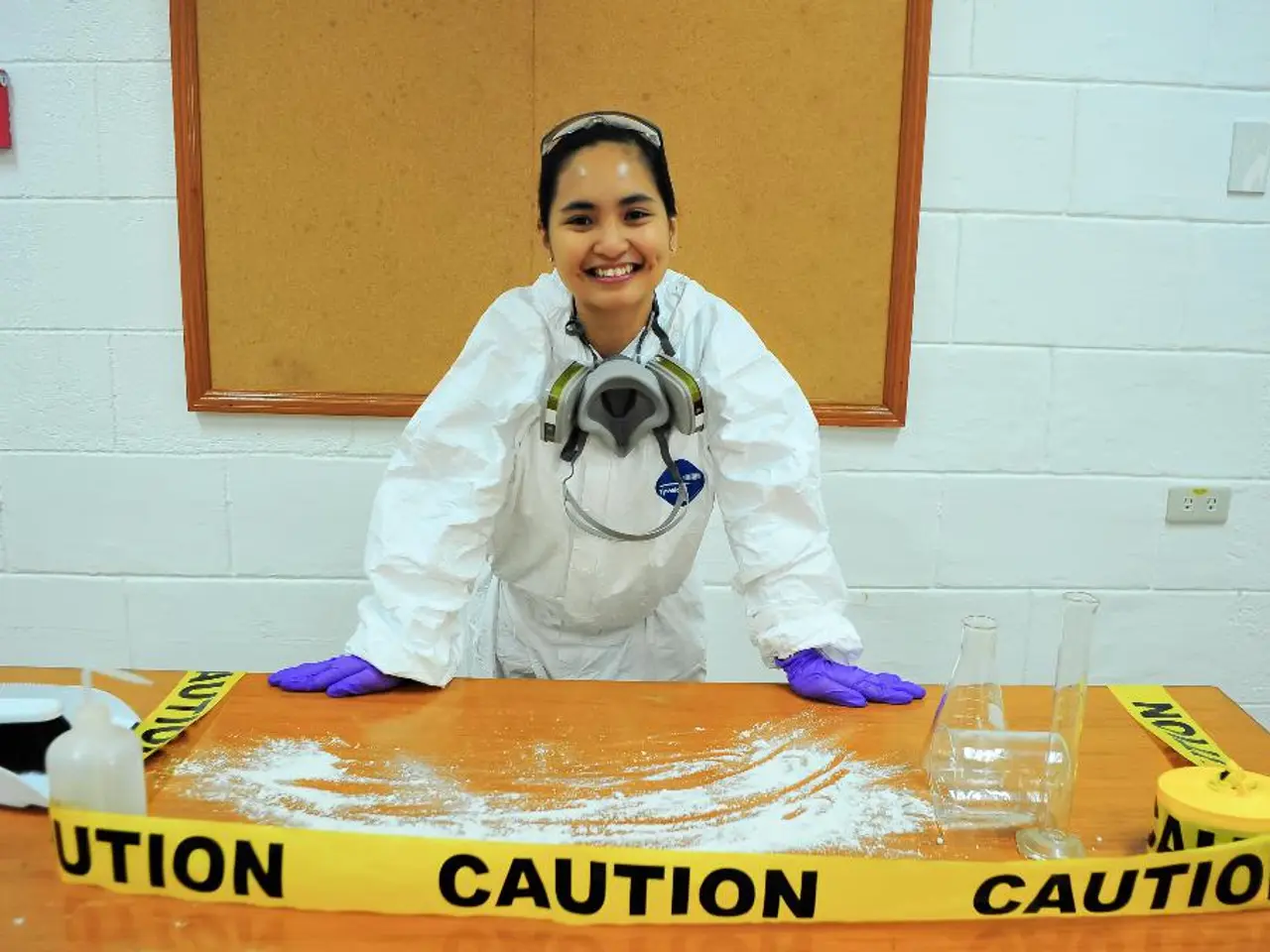Kodak's groundbreaking invention: the World's first digital camera
In 1975, a significant milestone was reached in the world of photography when Steven Sasson, an engineer at Kodak, unveiled the first digital camera. This pioneering device captured black-and-white images with a resolution of 100x100 pixels and stored them on magnetic tape cassette [3][4].
The camera worked by using a charge-coupled device (CCD) image sensor to convert light into electrical signals. These signals were then digitized and recorded onto the magnetic tape. The camera was bulky, weighing 3.6 kilograms, and took 23 seconds to record an image after a 50-millisecond exposure. Playback involved connecting the tape to a device linked to a television to view the image, which appeared after about 30 seconds [3].
Sasson's invention marked a departure from the traditional analog photography, which relied on chemical processes and film. Figures like George Eastman and Joseph Nicéphore Niépce were pioneers in the field, but their work was not digital [1][2].
To produce a digital picture in color whose quality matched that of a print from a 110 film negative, Sasson determined that he would need 2 million pixels [5]. In 1995, Kodak introduced the DC40, their first consumer digital camera [9].
Sasson's task at Eastman Kodak was to produce an electronic camera that used a CCD to capture its image. The first digital camera weighed 3.6 kilograms, used a single-speed electronic shutter of 1/20sec, and took black-and-white images measuring 100x100 pixels [7]. The first digital picture was taken in December 1975, depicting a portrait of a fellow technician named Joy Marshall [8].
In 2009, Sasson was awarded the American National Medal of Technology and Development. However, by the time Kodak introduced the DC40, digital pioneers like Sasson had been eclipsed by companies such as Sony, Apple, and Canon [9]. In 2012, Eastman Kodak filed for bankruptcy [6].
Despite the initial poor image quality, which did not pose a threat to the quality of pictures produced by 35mm film or 110 snapshot cameras of the time, the first digital camera paved the way for the advancements in digital photography we see today. The charge coupled device (CCD) used in Sasson's camera later became a standard in most digital cameras [10]. In 2012, Sasson received the British Royal Photographic Society's Progress Medal, recognising his significant contribution to the field [2].
References:
- George Eastman
- Joseph Nicéphore Niépce
- First digital camera
- Steven Sasson
- Digital imaging
- Eastman Kodak Company bankruptcy
- Steven Sasson's first digital camera
- First digital image
- Kodak DC40
- Charge-coupled device
The first digital camera, pioneered by engineer Steven Sasson in 1975, marked the entry of technology into the world of photography, using a charge-coupled device (CCD) to capture images digitally. This shift from traditional analog photography opened up opportunities for the development of various gadgets and advancements in technology, leading to the widespread use of digital cameras we see today.




